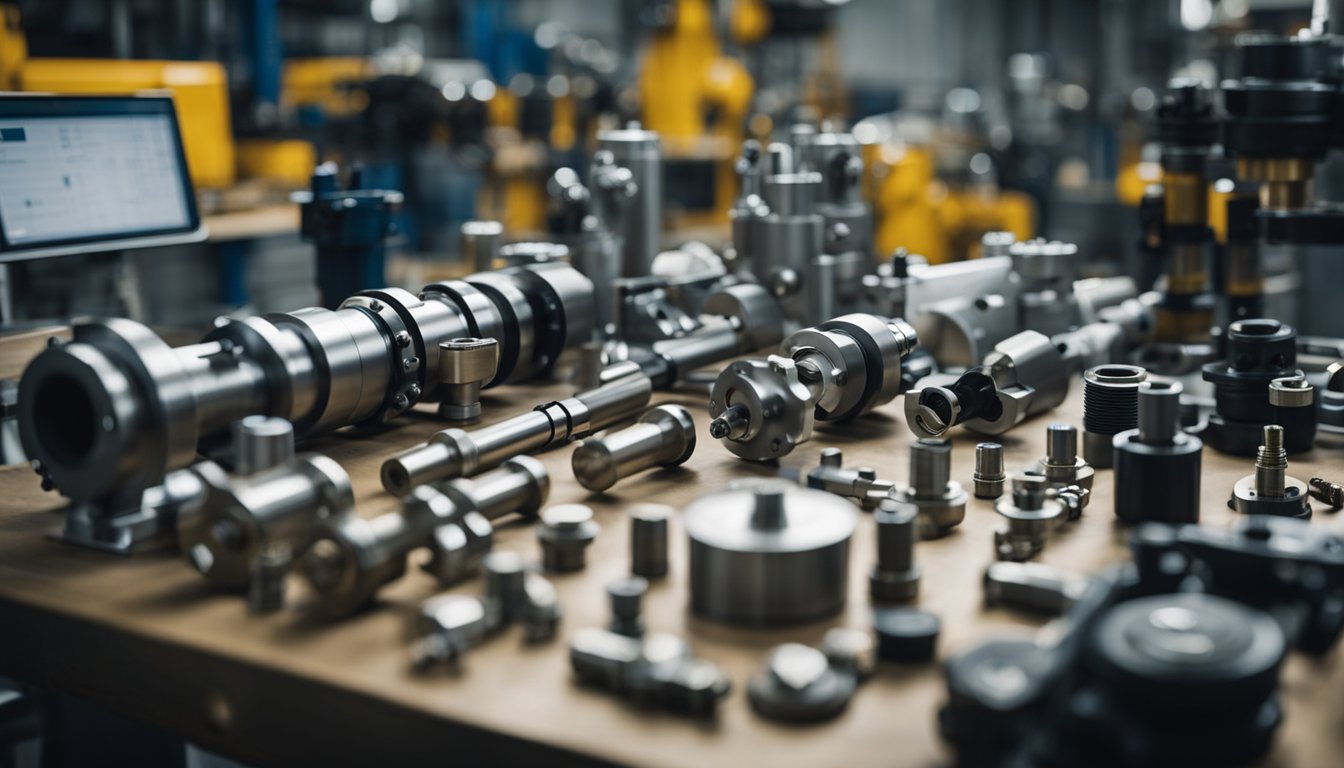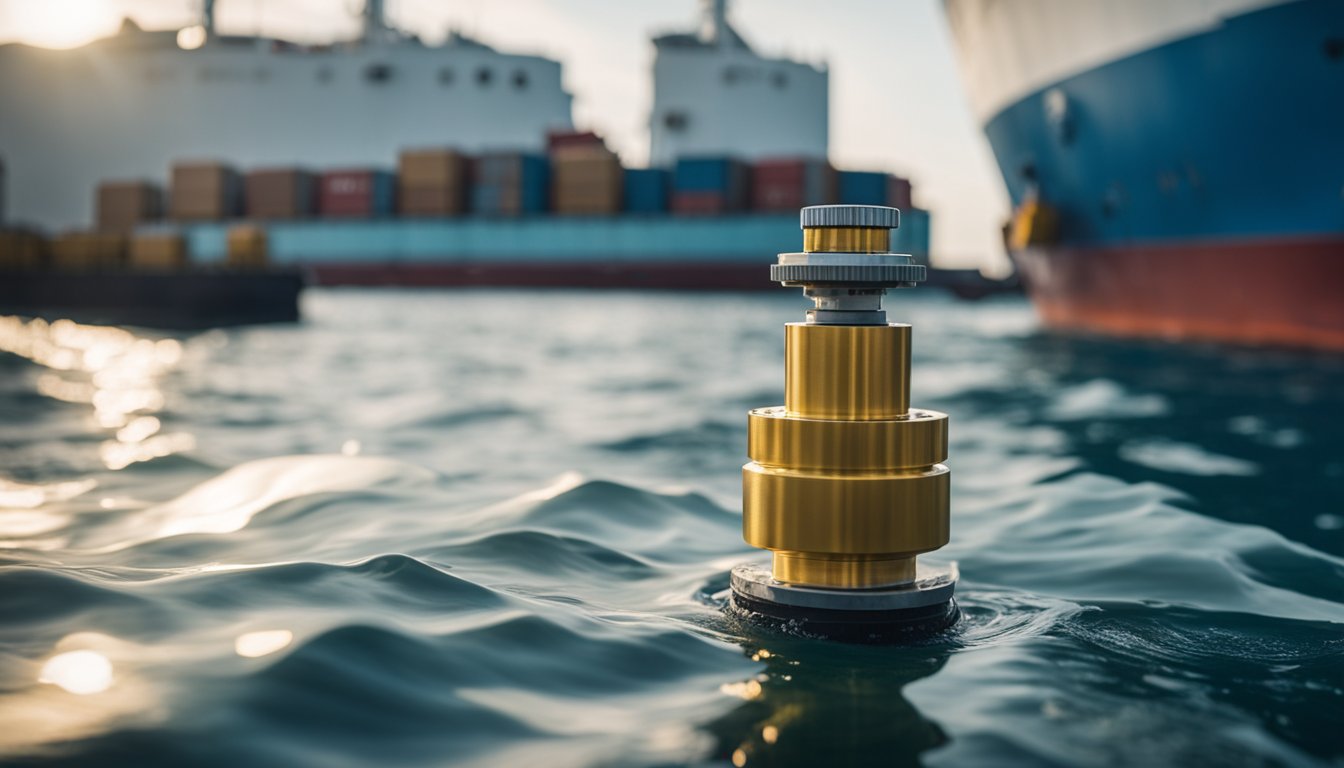Overview of Maritime Hydraulic Systems
Maritime hydraulic systems are essential for the efficient operation of various machinery on ships and vessels. They leverage the power of fluid mechanics to transmit and control energy.
Hydraulic Power Transmission
Hydraulic systems operate on the principle of fluid power transmission. This ensures the highly efficient transfer of energy which is necessary for performing heavy-duty tasks in a marine environment. Fluid under pressure provides the means to perform work by transferring the necessary force from one location to another, effectively powering crucial maritime operations.
Key Components of Hydraulic Systems
- Pumps: Convert mechanical energy into hydraulic energy by moving the fluid in the system.
- Valves: Control the flow and direction of the hydraulic fluid.
- Actuators (Cylinders and Motors): Convert the hydraulic energy back into mechanical energy to perform work.
- Reservoirs: Store excess hydraulic fluid.
- Piping and Hoses: Convey the hydraulic fluid throughout the system.
These components are fundamental for creating a closed circuit where the hydraulic fluid can circulate and energize various shipboard systems.
Role in Maritime Applications
Hydraulic systems play a pivotal role aboard ships, with applications ranging from steering mechanisms to stabilization systems. They are integral to operating winches, cranes, hatch covers, and propulsion systems, among others.
The versatility and reliability of hydraulics make them a mainstay in marine engineering, providing the necessary power for both linear and rotary movements required in maritime operations.
These systems are also customizable to fit the specific needs of different classes of vessels, underscoring their substantial role in the maritime industry.
Types of Maritime Hydraulic Components

Maritime hydraulic systems are integral to the operation of various machinery on ships, including steering gears, cranes, and hatch covers. These systems rely on a range of components, each with a specific function.
Hydraulic Pumps
Hydraulic pumps are the heart of any hydraulic system. They convert mechanical energy into hydraulic energy by creating a flow sufficient to overcome the pressure induced by the load at the pump outlet. Among these, gear pumps are often utilized for their simplicity and durability.
Hydraulic Motors
Hydraulic motors transform hydraulic energy back into mechanical energy. They drive essential equipment such as winches and cranes. These motors come in various types, such as axial, radial, and piston motors, chosen based on their efficiency and suitability for the load and operational conditions.
Control Valves
Control valves regulate the flow and pressure within hydraulic circuits. Their precision ensures safe and responsive operations of marine hydraulic systems. Spool-type directional control valves and pressure relief valves are examples of the commonly used valves in maritime applications.
Actuators
Actuators are the components that convert hydraulic energy into mechanical force, providing the motion needed to operate various machinery on board. This category includes hydraulic cylinders, which are often used for steering and lifting, and rotary actuators for tasks requiring angular motion.
Design and Construction

The design and construction of maritime hydraulic components are critical for ensuring their functional integrity and longevity. These components must withstand challenging oceanic conditions and comply with rigorous industry standards.
Material Selection
In the selection of materials, engineers prioritize strength-to-weight ratio and corrosion resistance. Metals like stainless steel and aluminum alloys are commonly chosen for their durability and relatively lightweight nature, which is essential for subsea applications where every extra pound is crucial. Here, specific engineering choices in subsea systems design highlight the importance of advanced materials.
Durability and Corrosion Resistance
Durability and corrosion resistance are non-negotiable for maritime hydraulic components. Seawater exposure necessitates the use of coatings and surface treatments that can handle constant abrasion and prevent corrosion.
Regular maintenance is also a crucial aspect of ensuring longevity, as even the most robust systems can degrade without proper upkeep.
Compliance with Marine Standards
Compliance with marine standards ensures safety and interoperability. Components are rigorously tested to meet standards such as those set by the International Maritime Organization (IMO).
Certification from recognized authorities confirms that the components perform reliably under the expected conditions. This document by Liebherr outlines how maritime components, including hydraulic systems, adhere to such standards.
Operation and Maintenance

Effective operation and maintenance are pivotal for the longevity and reliability of maritime hydraulic components. Properly maintained systems can significantly prevent downtime and costly repairs.
Routine Inspection Procedures
Routine inspections are a defense line against potential failures in maritime hydraulic systems. These procedures involve checking for leaks, examining hoses and fittings, and monitoring fluid levels. It’s essential to inspect filters and change the hydraulic oil regularly to ensure the system is free from impurities, as cleanliness is paramount for problem-free operation.
Maintenance Strategies
Maintenance strategies should encompass a proactive approach to maritime hydraulic care. Operators are encouraged to implement strategies that cover:
- Regular Lubrication: Critical for reducing friction and preventing wear.
- Hose Replacement: To address any signs of wear or environmental damage.
- Cylinder Resealing: Prevents leaks and maintains hydraulic pressure.
Adherence to these strategies assists in maintaining effective maritime hydraulics maintenance.
Troubleshooting Common Issues
Maritime hydraulic systems may encounter various issues that require immediate attention. Troubleshooting common issues involves:
- Identifying the Problem: Diagnostic tests can help pinpoint issues such as unusual noises or erratic system behavior.
- Addressing Component Failures: Replacement or repair of faulty components, such as pumps and valves, should be conducted promptly.
- Understanding warning signs and responding accordingly is fundamental in mitigating the impact of these issues, sustaining the resilience of maritime hydraulic equipment.
Hydraulic Fluids in Maritime Environments

In maritime applications, selecting the right hydraulic fluid is critical due to the unique challenges presented by sea conditions. The performance of these fluids greatly influences the operability and longevity of hydraulic systems.
Types of Hydraulic Fluids
There are several types of hydraulic fluids used in maritime environments, each with specific properties tailored to meet the demands of hydraulic systems at sea. These fluids primarily include:
- Mineral oils: Traditional and widely used due to their good lubrication and stability.
- Synthetic fluids: Designed for extreme temperature and pressure conditions, offering higher performance.
- Biodegradable fluids: Created with an emphasis on environmental safety, these are formulated to minimize ecological impact in case of leaks or spills.
Environmental Impact
Hydraulic fluids used in maritime environments have the potential to impact the ecosystem significantly if they are not managed correctly. Factors affecting their environmental impact are:
- Toxicity: The level of harm a fluid can cause to marine life.
- Biodegradability: A fluid’s ability to break down naturally and reduce long-term ecological damage.
Fluid Management Practices
Effective fluid management in maritime hydraulics is necessary to maintain system efficiency and minimize environmental harm. Practices include:
- Regular maintenance: Routine checks and replacement ensure fluid integrity.
- Leak prevention: Implementation of robust systems and monitoring to reduce the risk of spills.
- Fluid disposal: Proper disposal methods are critical to avoid contaminating the marine environment.
Operational and maintenance strategies can be derived from technical resources such as those found in discussions on effective maritime hydraulics maintenance and considerations for hydraulic technologies in offshore environments.
Innovations and Advancements
In the maritime industry, hydraulic components have undergone significant changes aimed at improving performance and environmental sustainability. These have included efforts to increase energy efficiency, integrate smart technologies for enhanced operations, and implement sustainable practices.
Energy-Efficient Hydraulics
Maritime hydraulic systems are being revolutionized with energy-efficient components that help reduce fuel consumption and lower emissions. These advancements include variable speed drives and advanced control algorithms that optimize hydraulic pump operations to meet the dynamic demands of the maritime environment.
Smart Hydraulic Systems
The incorporation of smart technology into hydraulic systems marks a sea change in vessel operations. With the use of sensors and real-time data analytics, these systems offer predictive maintenance capabilities and automated performance adjustments, improving reliability and reducing downtime.
Sustainable Practices in Hydraulics
Sustainability is key in the ongoing evolution of maritime hydraulics. Biodegradable fluids and environmentally friendly materials are being developed and used to minimize ecological impact. Manufacturers also focus on reducing the overall hydraulic system footprint and enhancing recyclability at the end of the system’s life cycle.
- Sustainable and Luxurious: Discovering Split’s Yachting Paradise – April 26, 2024
- MarineTraffic vs VesselFinder: Which Is Better Vessel Tracking Service? – February 14, 2024
- Port Costs: A Comprehensive Guide to Port Dues and Fees for Cargo Ships – February 12, 2024





Leave a Reply